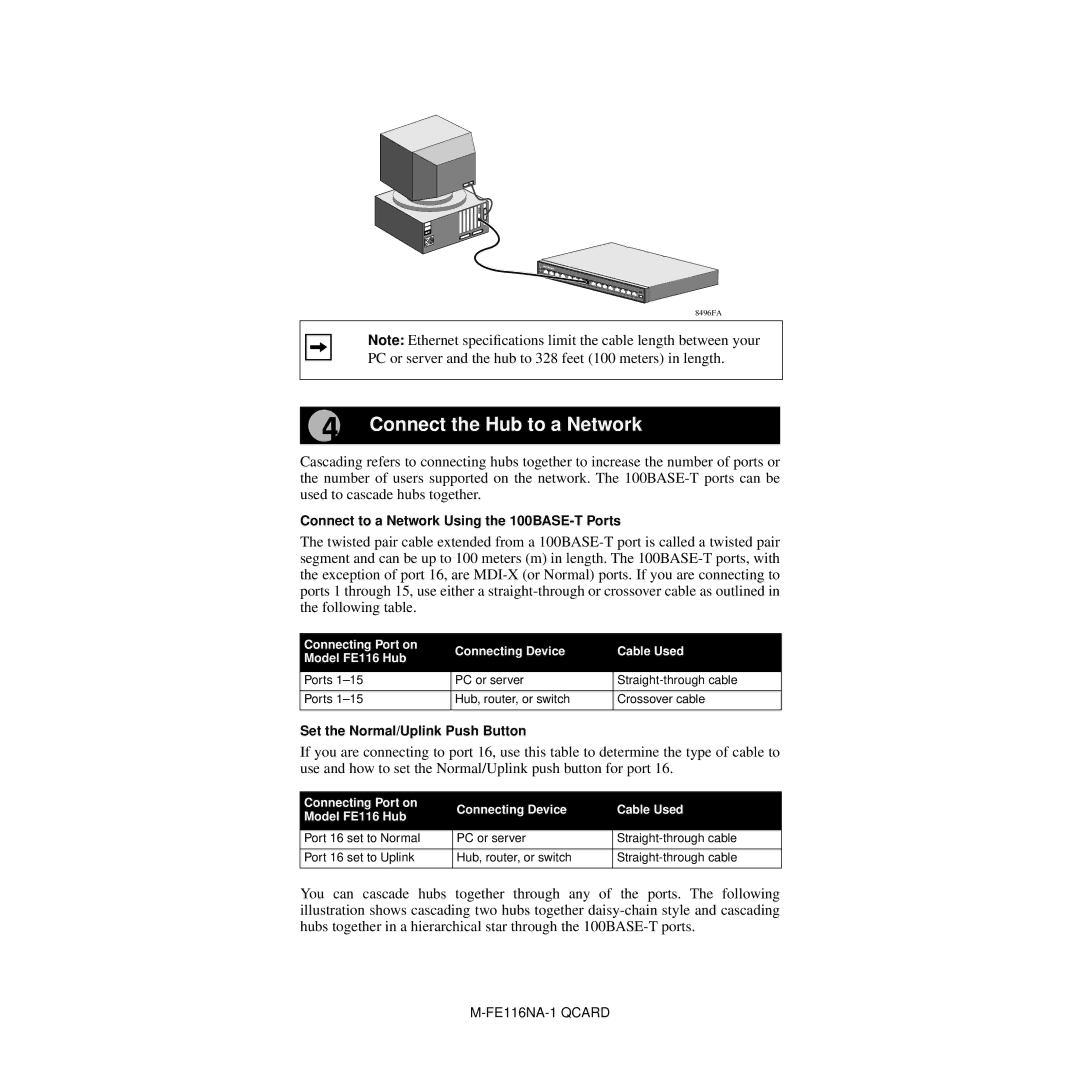
Pwr
Col
1 ![]()
![]()
![]() 2 3 4 5
2 3 4 5![]() 6 7 8 9 10 11 12
6 7 8 9 10 11 12
13 | Normal/Uplink |
14 | |
15 | 16 |
8496FA
Note: Ethernet specifications limit the cable length between your PC or server and the hub to 328 feet (100 meters) in length.
Connect the Hub to a Network
Cascading refers to connecting hubs together to increase the number of ports or the number of users supported on the network. The
Connect to a Network Using the
The twisted pair cable extended from a
Connecting Port on | Connecting Device | Cable Used | |
Model FE116 Hub | |||
|
| ||
|
|
| |
Ports | PC or server | ||
|
|
| |
Ports | Hub, router, or switch | Crossover cable | |
|
|
|
Set the Normal/Uplink Push Button
If you are connecting to port 16, use this table to determine the type of cable to use and how to set the Normal/Uplink push button for port 16.
Connecting Port on | Connecting Device | Cable Used | |
Model FE116 Hub | |||
|
| ||
|
|
| |
Port 16 set to Normal | PC or server | ||
|
|
| |
Port 16 set to Uplink | Hub, router, or switch | ||
|
|
|
You can cascade hubs together through any of the ports. The following illustration shows cascading two hubs together
